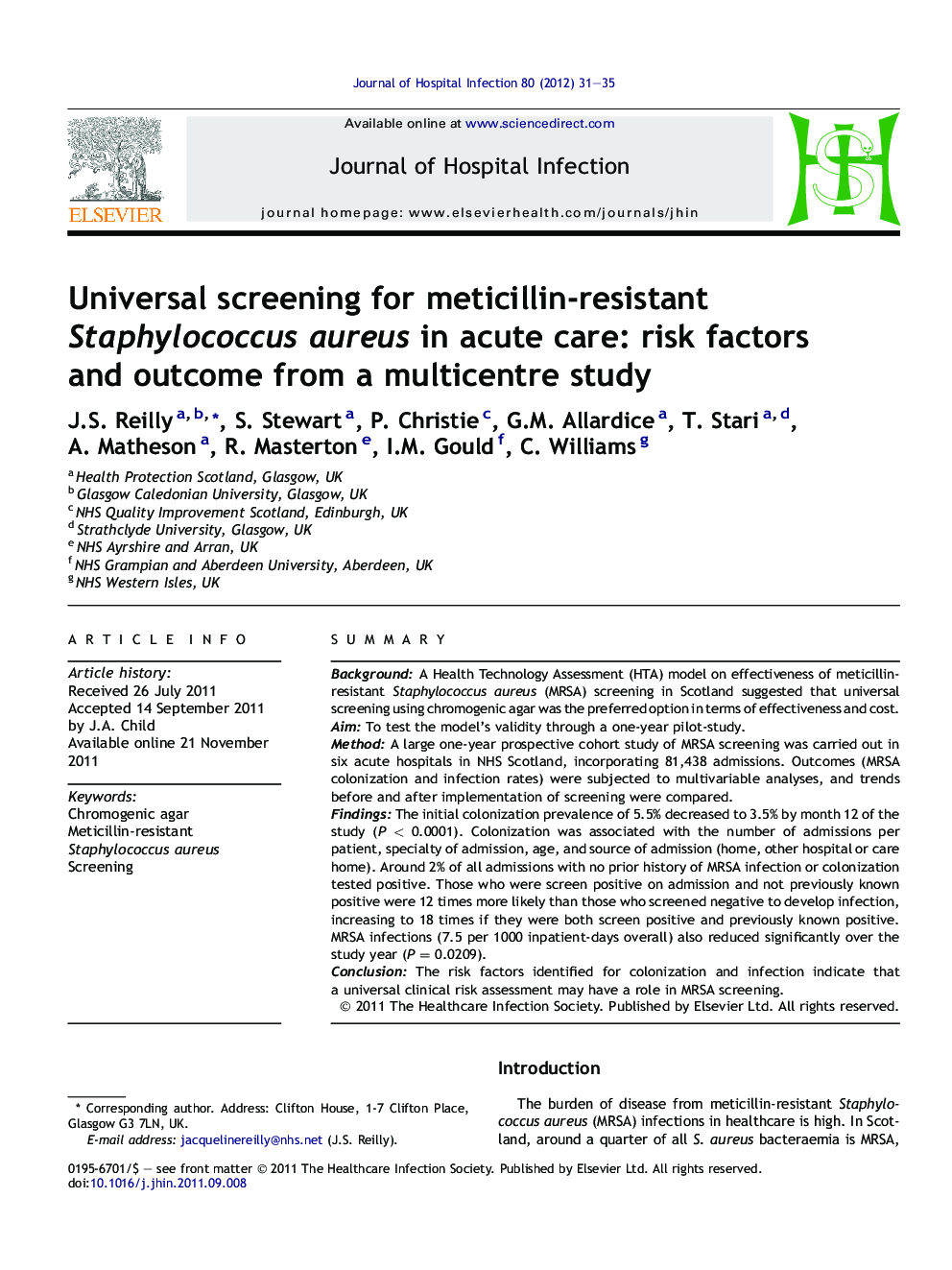| Article ID | Journal | Published Year | Pages | File Type |
|---|---|---|---|---|
| 3372024 | Journal of Hospital Infection | 2012 | 5 Pages |
SummaryBackgroundA Health Technology Assessment (HTA) model on effectiveness of meticillin-resistant Staphylococcus aureus (MRSA) screening in Scotland suggested that universal screening using chromogenic agar was the preferred option in terms of effectiveness and cost.AimTo test the model’s validity through a one-year pilot-study.MethodA large one-year prospective cohort study of MRSA screening was carried out in six acute hospitals in NHS Scotland, incorporating 81,438 admissions. Outcomes (MRSA colonization and infection rates) were subjected to multivariable analyses, and trends before and after implementation of screening were compared.FindingsThe initial colonization prevalence of 5.5% decreased to 3.5% by month 12 of the study (P < 0.0001). Colonization was associated with the number of admissions per patient, specialty of admission, age, and source of admission (home, other hospital or care home). Around 2% of all admissions with no prior history of MRSA infection or colonization tested positive. Those who were screen positive on admission and not previously known positive were 12 times more likely than those who screened negative to develop infection, increasing to 18 times if they were both screen positive and previously known positive. MRSA infections (7.5 per 1000 inpatient-days overall) also reduced significantly over the study year (P = 0.0209).ConclusionThe risk factors identified for colonization and infection indicate that a universal clinical risk assessment may have a role in MRSA screening.
